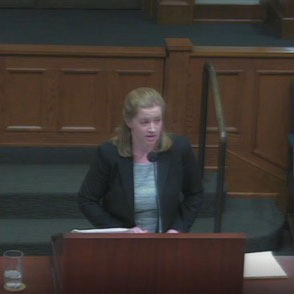 In Minnesota, there is a six-year statute of limitations for personal injuries arising out of a motor vehicle accident. Accordingly, you have six years from the date of the accident to serve a Summons and Complaint upon the party or parties responsible for your injuries. Failure to adhere to this date will preclude you from recovery.
In Minnesota, there is a six-year statute of limitations for personal injuries arising out of a motor vehicle accident. Accordingly, you have six years from the date of the accident to serve a Summons and Complaint upon the party or parties responsible for your injuries. Failure to adhere to this date will preclude you from recovery.
While six years may sound like a long period of time, when you factor in treatment time, negotiations prior to serving the Complaint, and settling related claims (i.e., workers’ compensation, applying for and receiving disability), it goes by quickly. To ensure your attorney has ample time to investigate and document the claim – thereby, securing the highest settlement value for you – seek an attorney’s help sooner rather than later. While an attorney may not be able to secure money on your behalf immediately, earlier representation means the attorney will be able to properly document your treatment and damages.
During your intake interview, be prepared to not only talk about the motor vehicle accident and your injuries, but also prior injuries. You will need to inform your attorney of any and all facilities you have treated in the years prior to the accident. Prior injuries to the same or similar areas that were injured in the motor vehicle accident do not preclude recovery, but it is incredibly important for your attorney to be aware of these injuries. Failure to disclose prior injuries or treatment early in your case could cost you hundreds of thousands of dollars.
If you have photographs of the accident, your damaged property, and/or your injuries, bring copies of these to your intake. If the photographs are stored electronically on your phone, computer or camera, the attorney will ask that you send them to him or her. Any pictures taken by you or others can and, likely, will become evidence in your case. To the best of your ability, you should document who took the picture and when it was taken.
Depending on the nature and extent of your injuries, you could be doctoring for several months or even years. Once you hire an attorney, you will need to keep him or her apprised of your diagnosis and prognosis. When you have completed treatment and/or your doctors have determined there is no further treatment, it will be time to evaluate your claim.
Your attorney will gather the appropriate and necessary medical notes, bills, and ledgers of costs already paid on your behalf. You will be responsible for repaying insurance companies who have made conditional payments as a result of your bills. The insurance company’s claims will be paid through your negotiated settlement.
Once the aforementioned documents are gathered, your attorney can submit a demand upon the insurance company or serve the adverse driver(s) with a lawsuit. The route which your attorney will take depends on a number of factors including, but not limited to, the nature and severity of your injuries, your prognosis, and whether your claim is running close to the statute of limitations.
A demand is a letter drafted by your attorney and sent on your behalf to the adverse driver’s insurance company. This document details how the accident occurred, your course of treatment, cost of treatment, and the amount of money you are entitled to as a result of the injuries sustained. The insurance company does not have to reply to the demand within any specified period of time, but generally proposes a counteroffer within 30 to 45 days of receipt of the demand. If the parties are unable to settle your claim via these informal negotiations, a lawsuit may need to be started. Informal negotiations typically last about six weeks (inclusive of the time immediately after sending the demand).
If informal negotiations fail and a lawsuit is commenced, it generally takes 12 to 18 months for your lawsuit to resolve. The vast majority of personal injuries claims settle prior to trial.
Hiring an attorney at the earliest possible time after your motor vehicle accident is critical. We understand you have innumerable things going through your mind after suffering devastating injuries, but having an attorney by your side should alleviate some of this stress. Your attorney will communicate with your insurance company and any adverse insurance companies. Insurance companies have many rights and tools at their disposal to effectively defend your claim. Even your insurance company could turn into an adversary. To ensure the best financial recovery for yourself, you should hire an expert that will explain your rights through it all. Contact Meuser, Yackley & Rowland, P.A. for a free, no-obligation consultation. Call us today at 1-877-746-5680.
 A few weeks ago, I argued before the Minnesota Supreme Court in the case of Angela Hawley v. City of Blaine and League of Minnesota Cities. Less than ten days later, the Minnesota Supreme Court dismissed the employer/insurer’s appeal as moot, which is one of the outcomes that I advocated for at oral arguments.
A few weeks ago, I argued before the Minnesota Supreme Court in the case of Angela Hawley v. City of Blaine and League of Minnesota Cities. Less than ten days later, the Minnesota Supreme Court dismissed the employer/insurer’s appeal as moot, which is one of the outcomes that I advocated for at oral arguments. We are excited to announce that Jennifer Yackley and Lindsey Rowland have been named partners and, as such, Meuser Law Office, P.A. is now
We are excited to announce that Jennifer Yackley and Lindsey Rowland have been named partners and, as such, Meuser Law Office, P.A. is now 
 In Minnesota, a police officer or firefighter who suffers from a physical or mental condition that limits their ability to perform the normal duties of their position for a period of at least one year, and where that condition is the direct result of an injury or illness arising out of or incurred during the performance of inherently dangerous duties, is eligible for
In Minnesota, a police officer or firefighter who suffers from a physical or mental condition that limits their ability to perform the normal duties of their position for a period of at least one year, and where that condition is the direct result of an injury or illness arising out of or incurred during the performance of inherently dangerous duties, is eligible for 
 In 2018, the Minnesota legislature took a huge step, and passed legislation creating a workers’ compensation statutory presumption of
In 2018, the Minnesota legislature took a huge step, and passed legislation creating a workers’ compensation statutory presumption of 